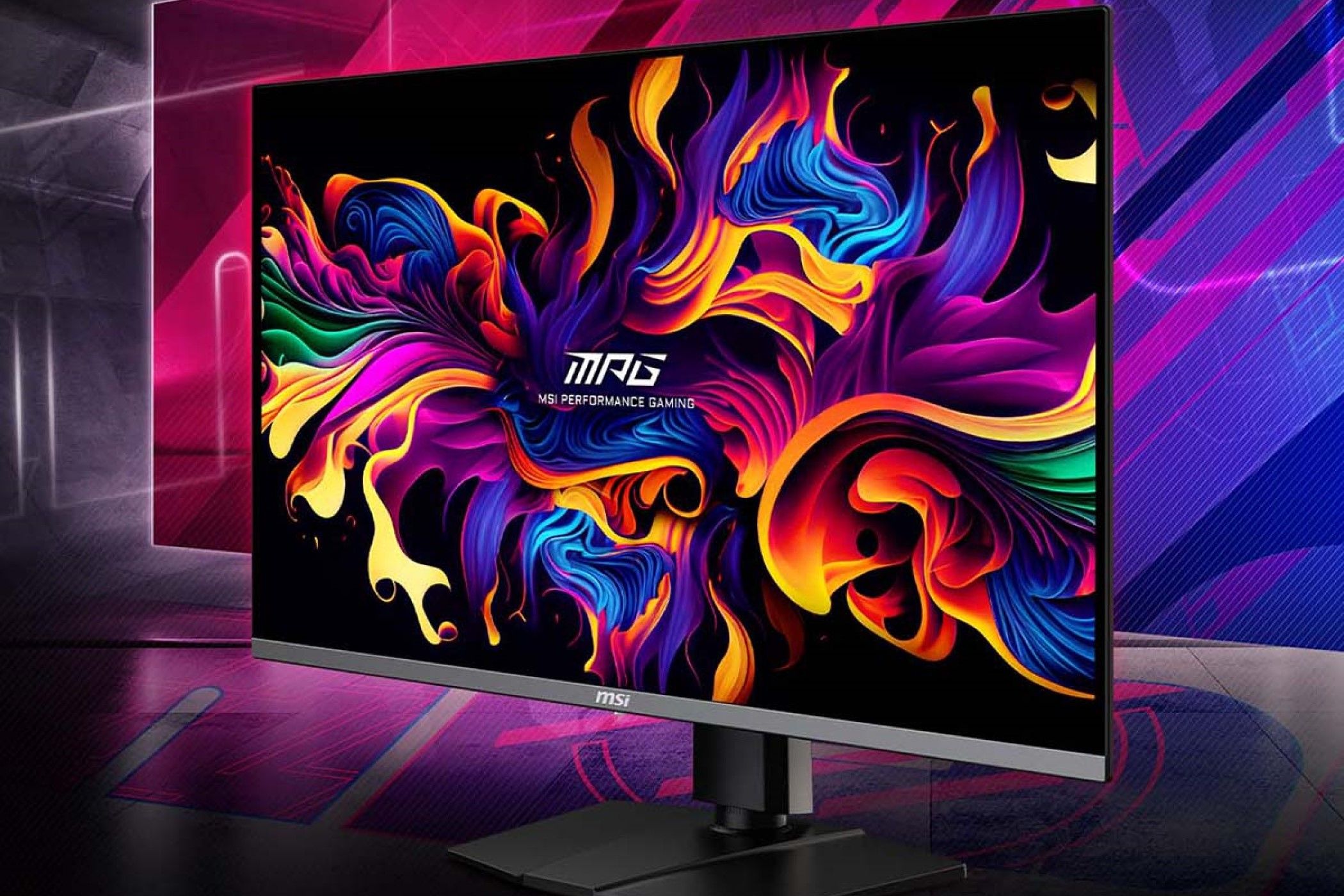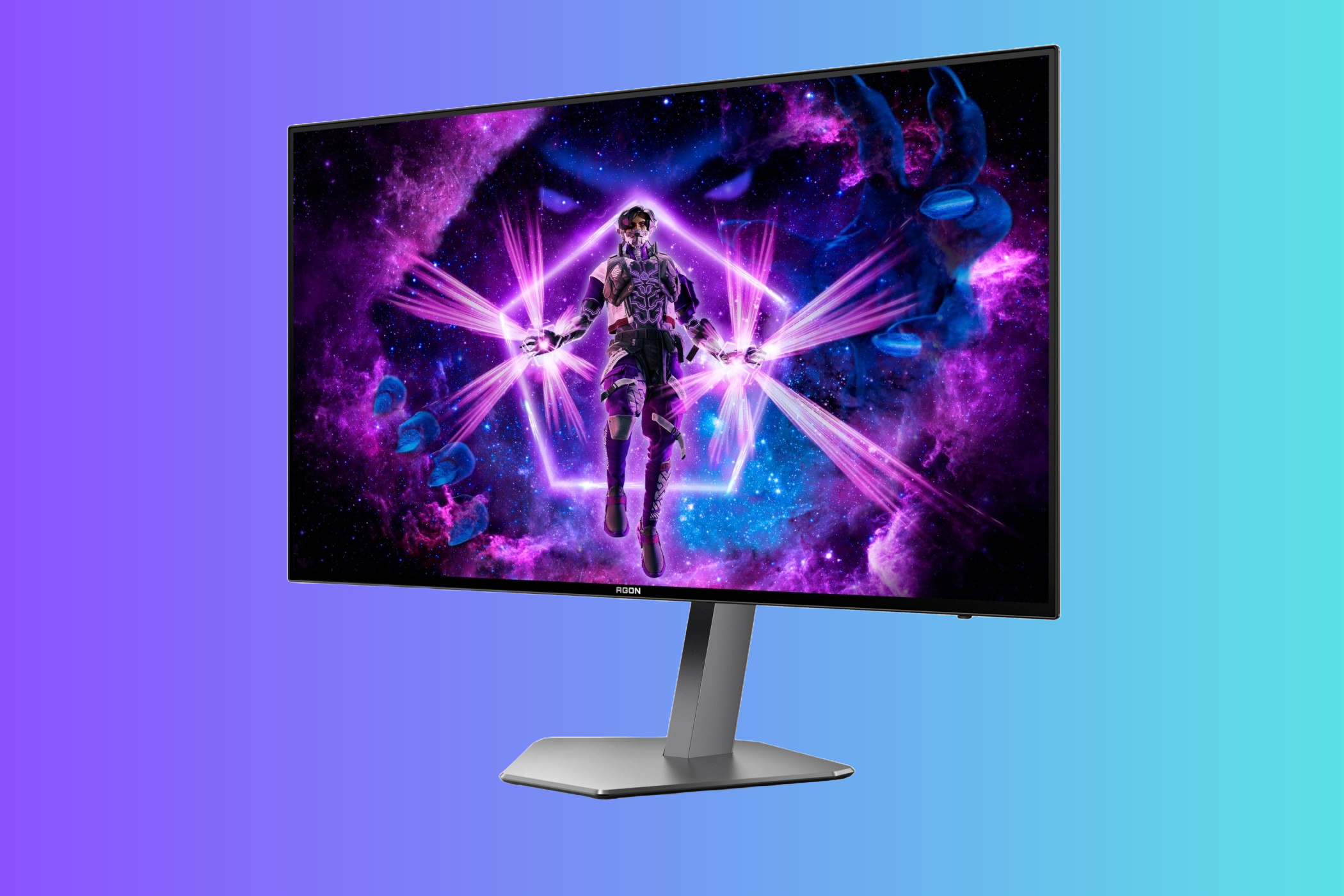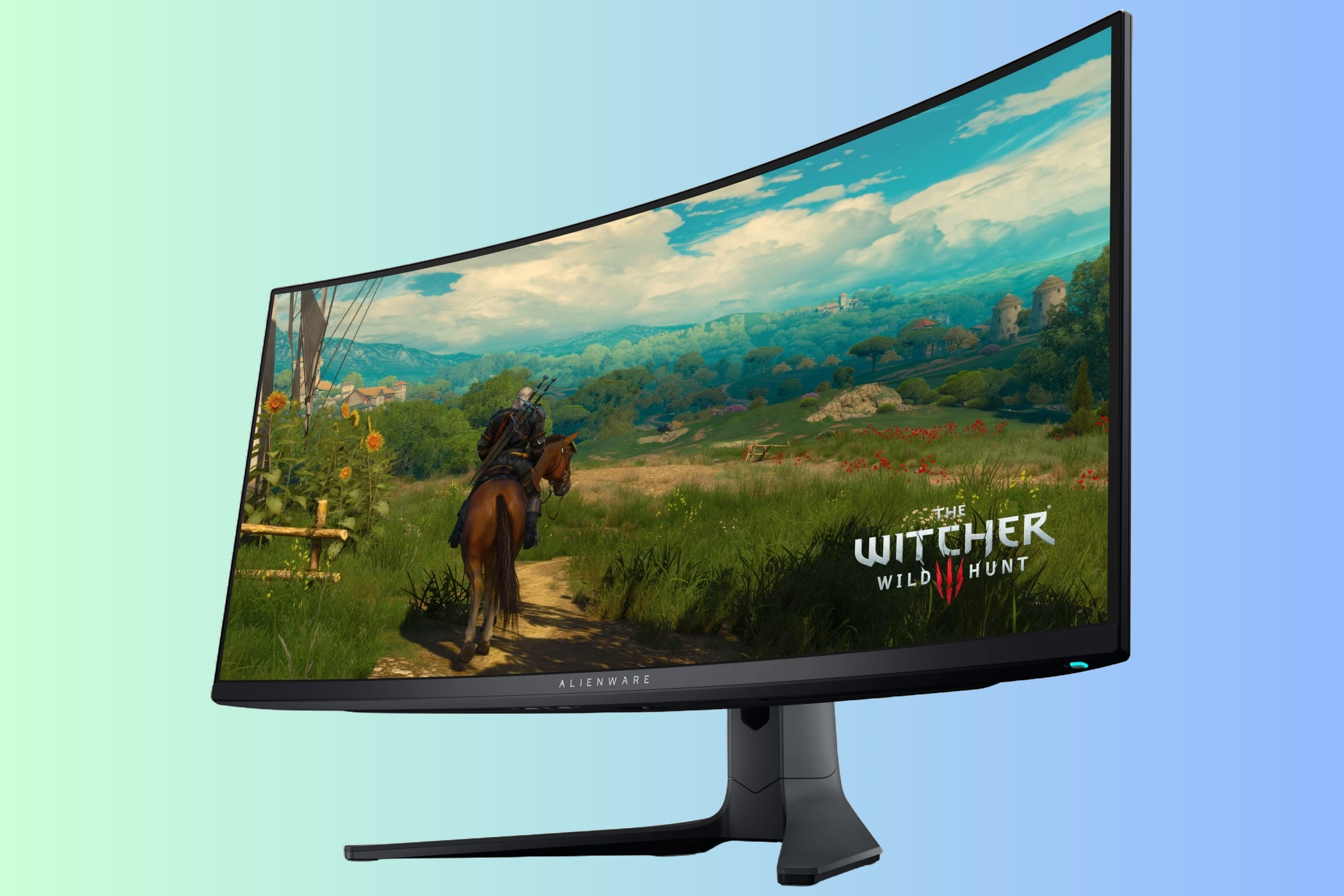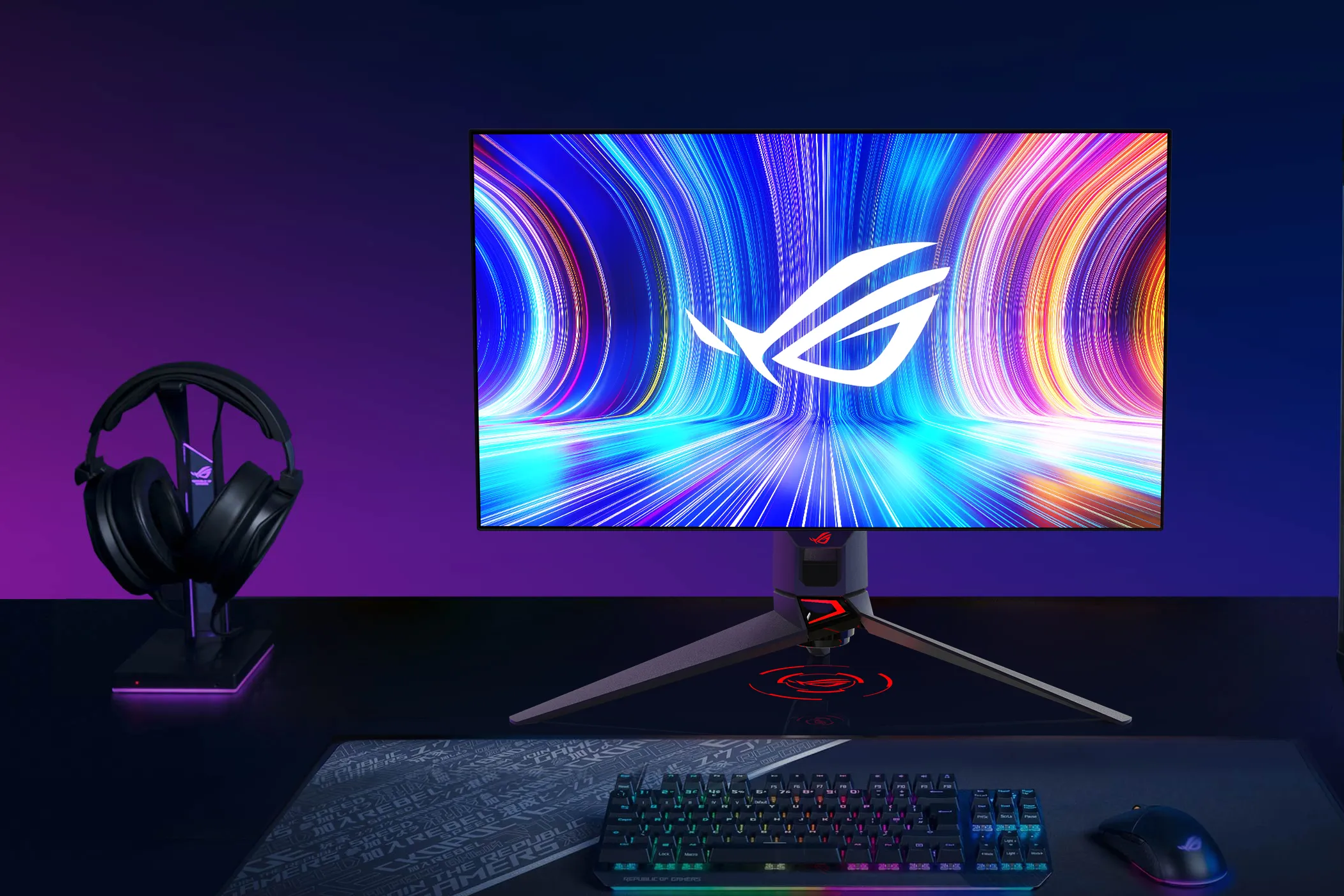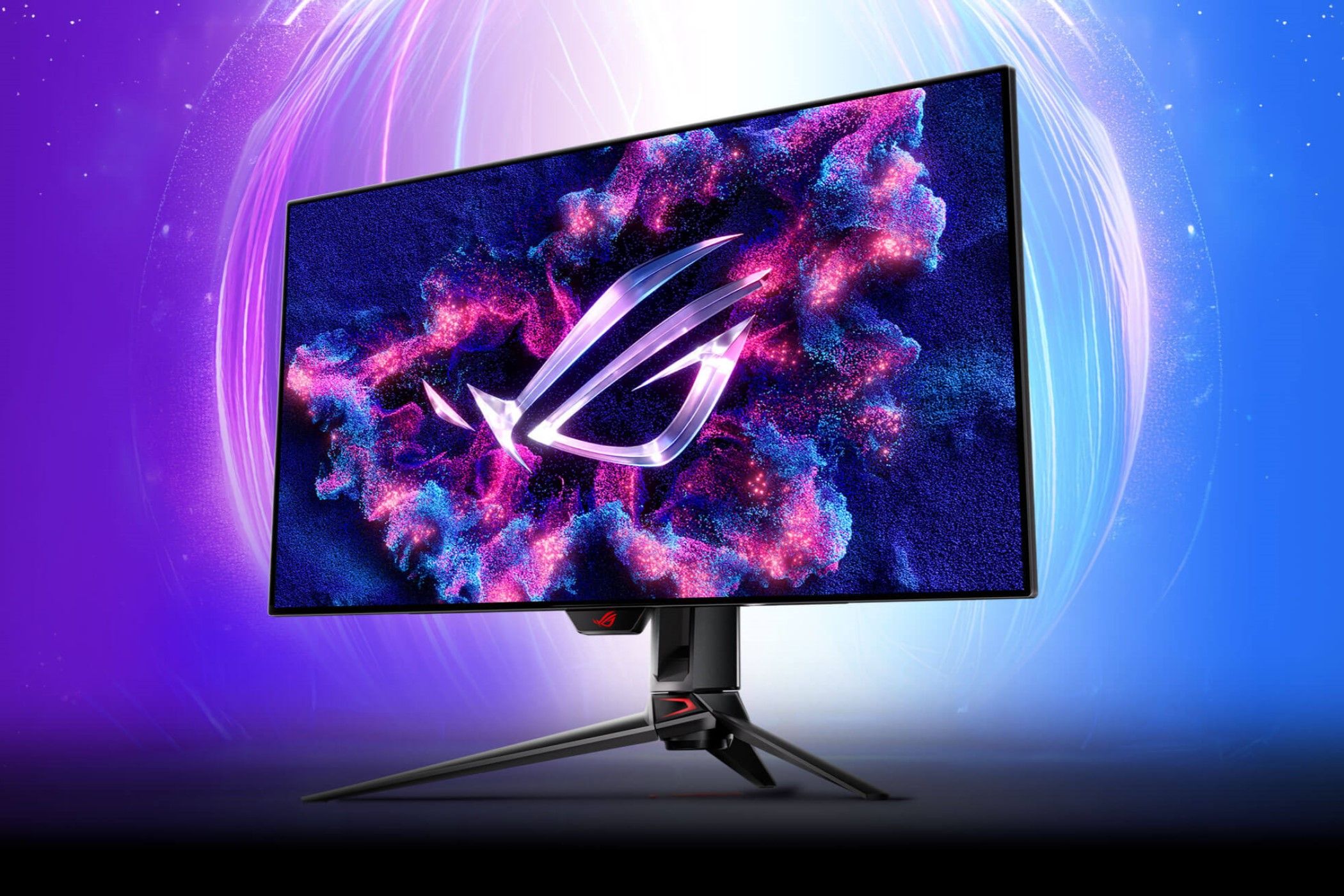OLED gaming monitors are getting better and better, and if you want the best gaming experience in 2024, an OLED gaming monitor will knock it out of the park thanks to its unbeatable motion clarity, superior HDR, infinite contrast, and a wide color gamut.
Prospective OLED gaming monitor buyers should first and foremost know the difference between the two OLED panel types used in every OLED gaming monitor on the market: Samsung’s QD-OLED and LG’s WOLED.
QD-OLED panels lack a polarizing layer, making blacks look more like grays or darker shades of purple in brightly lit rooms. This issue is found on every QD-OLED panel, including TVs and QD-OLED monitors. On the flip side, some monitors with QD-OLED panels offer Dolby Vision support. QD-OLEd monitors also offer a wider color gamut, and slightly better clarity than WOLED monitors thanks to their glossy screen coating.
WOLED panels, on the other hand, offer a better HDR experience in brighter scenes, even though they aren’t as bright as QD-OLED panels. They have a matte coating and offer perfect blacks even in brightly lit rooms. Finally, depending on the model, WOLED panels have a higher refresh rate, with their max refresh rate being 480Hz.
Note that the current generation of QD-OLED and WOLED panels both suffer from text clarity issues, also known as text fringing, where the text shown on these panels isn’t as sharp looking as on LCD monitors, with pink-green color fringing noticeable around text edges. The issue stems from unorthodox subpixel layouts used in the two panels. WOLED panels feature an RGWB—red, green, white, and blue—stripe layout, while QD-OLED panels have a triangular RGB configuration instead of the usual, stripe RGB configuration found in LCD panels.
That said, 4K QD-OLED and WOLED monitors are sharp enough to make text fringing issues barely noticeable unless you’re explicitly looking for it, making them pretty solid for workloads that include text editing and reading in your browser.
The next-generation LG WOLED panel, found on the recently released ASUS ROG Swift PG27AQDP, fixes the text fringing issue. The said WOLED panel will be featured in more OLED monitors arriving later. Samsung also has a next-gen QD-OLED panel in the pipeline that should also deal with text clarity issues, but at the moment, there isn’t any monitor featuring said panel.
VRR flicker is yet another issue found on most OLED monitors. The flicker is more noticeable on some monitors than others. Some models have noticeable flicker during abrupt changes in frame rate in-game, while others have noticeable VRR flicker only during loading screens and during rapid frame rate shifts in dark scenes.
Certain monitors come with flicker-free features that mostly remove instances of VRR flicker at the cost of reduced VRR range. With all that said, VRR flicker is much less noticeable if your PC can run games at triple-digit frame rates. If your PC can keep your favorite games running at 100 FPS or higher, you should not worry much about the OLED VRR flicker.
Compared to LCD monitors, OLED monitors offer better HDR, much-improved response times, superb motion clarity, zero blooming and backlight glow problems thanks to the fact that each pixel on an OLED panel is self-emissive. On the other hand, LCD monitors can match their OLED counterparts when it comes to the color gamut and color accuracy. And while OLED panels come with better HDR, LCD screens can achieve higher full-screen brightness.
The biggest downside of OLED panels is their burn-in proneness, which is still a real issue. Modern OLED monitors come with all kinds of features that should improve their longevity, and if you plan on using the monitor mostly for gaming, you should be fine for years to come. On the other hand, if you plan on using your next monitor for work that includes a ton of static elements for six hours a day or longer, you might think about getting an LCD monitor instead. If you think that an LCD monitor is a better choice for your needs, do check our best computer monitors, best ultrawide monitors, and best gaming monitors roundups.
With all this out of the way, let’s check our pick for the best OLED gaming monitor overall.
|
How Did We Research |
||
|
Models Evaluated |
Hours Researched |
Reviews Analyzed |
|
26 |
8 |
22 |
How-To Geek’s product recommendations come from the same team of experts that have helped people fix their gadgets over one billion times. We only recommend the best products based on our research and expertise. We never accept payment to endorse or review a product.
Read More »
Best OLED Gaming Monitor Overall: MSI MPG321URX
|
Pros |
Cons |
|---|---|
|
✓ More affordable than the competition |
✗ Blacks look like grays in brightly lit rooms |
|
✓ 4K and 240Hz |
|
|
✓ Virtually no text fringing |
|
|
✓ Impressive HDR |
|
|
✓ Superb motion clarity |
The MSI MPG321URX is the best of the bunch regarding the current generation of QD-OLED 240Hz 4K gaming monitors. It’s the most affordable and comes with all other benefits found on other similar monitors, such as impressive HDR, a wide color gamut combined with high color accuracy, and no text fringing issues thanks to the 4K resolution that, combined with a 32-inch display, has a high enough pixel density to counterbalance less than ideal subpixel layout.
The monitor offers a 1,000 nit peak brightness in HDR but also supports DisplayHDR 400 True Black, which looks pretty good thanks to OLED’s infinite contrast ratio. You’re getting excellent VRR support, a built-in KVM switch, zero noise thanks to MSI using a heatsink instead of a fan to dissipate heat, and a USB-C port with DP Alt mode and 90W USB Power Delivery.
The MSI MPG321URX also has less noticeable VRR flicker compared to most other OLED monitors and TVs. It’s still noticeable on loading screens or in case your frame rate drops massively in an instant, but in most cases, VRR flicker is non-present. Included ports are two HDMI 2.1, a single DisplayPort 1.4, the aforementioned USB-C with DP Alt, and a two-port USB 2.0 hub.
The monitor is built like a tank, and its stand is much more compact than the stands found on many other 32-inch OLED monitors, making it a great choice for gamers who don’t have much space on their desks. As for the negatives, the QD-OLED panel used here lacks a polarizing layer, meaning that in bright environments, blacks look more like grays or purples. Other than that, this is an impressive OLED gaming monitor at an unbeatable price.
Alternatives here include the SAMSUNG Odyssey OLED G8 and the Alienware AW3225QF, which pack the same QD-OLED panel from Samsung. If you’re more of a 1440p gamer, the impressive ASUS PG27AQDP, which features a 480Hz refresh rate and no text fringing issues, is a banger of an OLED gaming monitor.
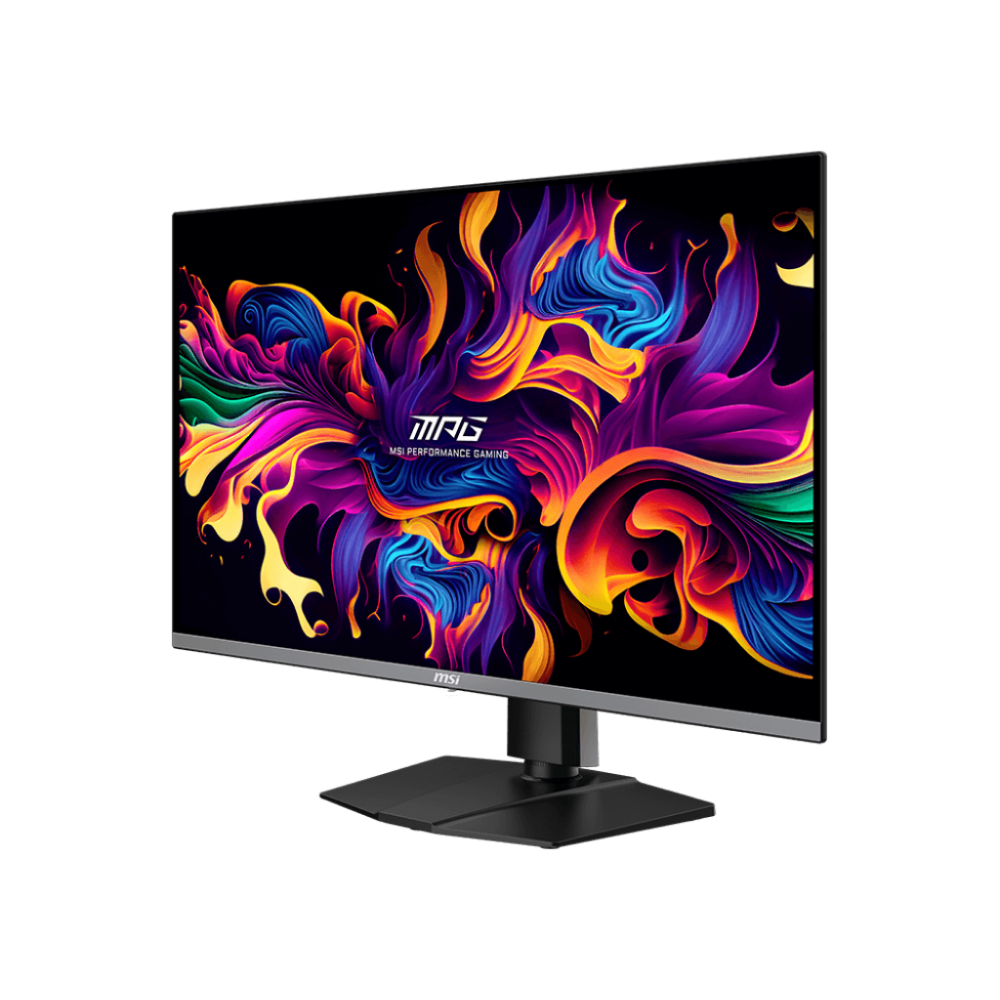

Best OLED Gaming Monitor Overall
MSI MPG321URX
The MSI MPG321URX is a brilliant 4K OLED gaming monitor that comes with all the goodies you’d expect from an OLED monitor with the two cherries on top being silent operation thanks to the heatsink used for heat dissipation and the bargain price.
|
Pros |
Cons |
|---|---|
|
✓ Affordable |
✗ HDR not as good as on pricier OLED monitors |
|
✓ Impressive motion clarity |
✗ Text fringing issues |
|
✓ 240Hz refresh rate |
✗ VRR flicker |
|
✓ Premium build quality |
|
|
✓ USB 3.2 hub |
The budget OLED gaming monitor market isn’t as rich as the LCD monitor market, but a couple of models stand out price-wise. The most affordable is the AOC Agon PRO AG276QZD, which you can find for $600 or less, which is at least $100 less than the rest of the 1440p OLED competition costs.
The AOC Agon PRO AG276QZD offers a lot for the money: 240Hz refresh rate, excellent motion performance thanks to near instantaneous response time, pretty solid HDR, excellent color accuracy out of the box, surprisingly premium build quality, excellent VRR implementation, and a three-port USB 3.2 hub.
On the flip side, you’re only getting two HDMI 2.0 ports instead of HDMI 2.1 ports found on pricier OLED monitors, but at least you’ve got a single DisplayPort 1.4, which is enough for a perfect 1440p@240Hz experience. While the HDR experience is pretty solid and better than on most LED monitors, it’s still below what you can find on premium OLED monitors. There’s also the text fringing issue and VRR flicker, but those two issues are found on many other OLED monitors.
If you can find the AOC Agon PRO AG276QZD for $600 or less, it’s the way to go if you’re in the market for a budget OLED gaming monitor. If you cannot find it at the $600 price point, though, there are better options out there. We recommend the MSI MAG 271QPX, a 360Hz 1440p OLED monitor with a higher refresh rate, HDMI 2.1, better motion clarity, and better HDR, which you can get for about $700.
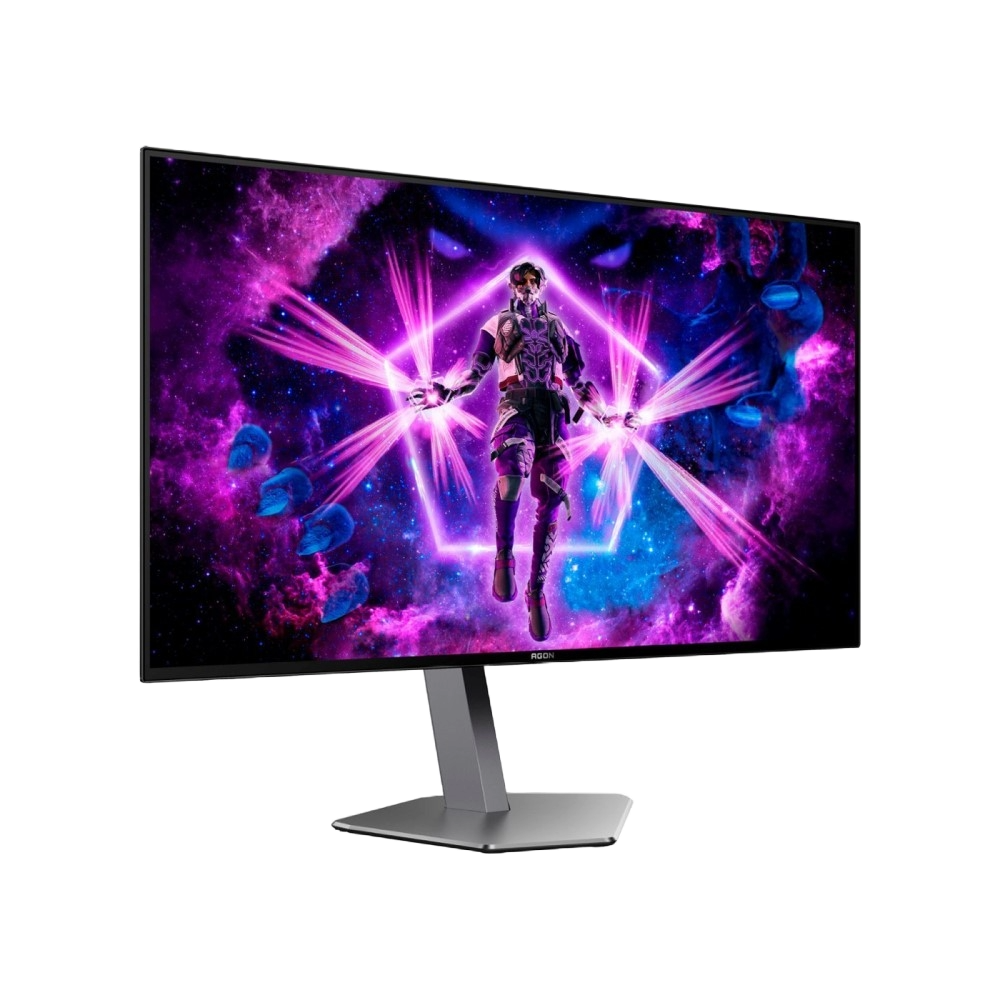

Best Budget OLED Gaming Monitor
AOC Agon PRO AG276QZD
$575 $700 Save $125
Among budget OLED gaming monitors, the AOC Agon PRO AG276QZD stands out with its competitive price, solid color accuracy, USB 3.2 hub, and sturdy build quality.
|
Pros |
Cons |
|---|---|
|
✓ Excellent HDR |
✗ Blacks look like grays in bright environments |
|
✓ Excellent VRR support and low input lag |
✗ Text fringing issues |
|
✓ Top-notch motion clarity |
✗ VRR flicker |
|
✓ Wide color gamut with great color accuracy |
|
|
✓ 165Hz refresh rate |
The Alienware AW3423DWF has aged like fine wine, and although it’s a bit long in the tooth, it’s still the best option for ultrawide fans looking for a new OLED gaming monitor. The monitor’s QD-OLED panel has excellent colors, top-notch color accuracy, impressive HDR, and near-instant response time (a feature found on every OLED monitor if we’re being honest, but worth mentioning nonetheless).
The 165Hz refresh rate combined with 1440p ultrawide resolution is plenty, even if you’re rocking an RTX 4090, especially if you’re more of a AAA single-player gamer than a multiplayer try-hard. Despite not coming with a G-Sync module like its cousin, the Alienware AW3423DW, you’re getting excellent VRR support and low input lag.
The monitor’s not perfect, though. First, the QD-OLED panel lacks a polarizer, meaning blacks look more like grays in bright environments. Next is the text fringing issue stemming from the subpixel layout used, making the monitor less than ideal for workloads that include text editing. Lastly, many OLED panels suffer from noticeable flickering caused by VRR, which happens when frame rates jump up and down when gaming and the Alienware AW3423DW isn’t an exception here.
If a 34-inch panel isn’t massive enough for your needs, check out 45-inch OLED monitors based on LG’s WOLED panel, such as the LG 45GS95QE and Corsair Xeneon Flex. If 34 inches is just right but QD-OLED’s poor performance in bright environments is unacceptable, the LG 34GS95QE, based on a WOLED panel and sporting a 240Hz refresh rate, might be a worthy alternative. Lastly, if you’re after a super ultrawide OLED gaming monitor, the Samsung Odyssey OLED G9 is the one to get.
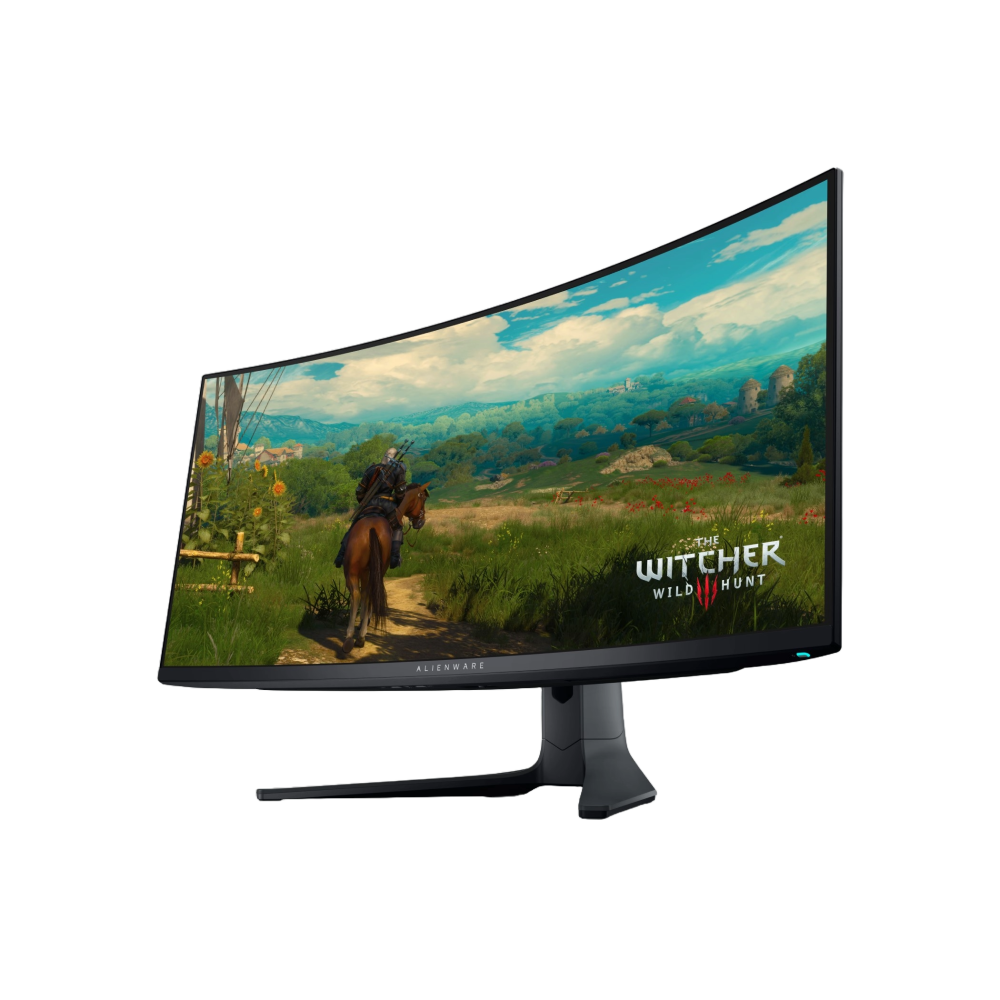

Best Ultrawide OLED Gaming Monitor
Dell Alienware AW3423DWF
$700 $900 Save $200
Despite being an older model, the Dell Alienware AW3423DWF is still the best ultrawide OLED gaming monitor thanks to its attractive price, stunning HDR, 165Hz refresh rate, VRR support, and vivid colors.
|
Pros |
Cons |
|---|---|
|
✓ 480Hz refresh rate and 1440p resolution |
✗ Expensive |
|
✓ Impressive HDR |
|
|
✓ Next-gen WOLED panel doesn’t suffer from text fringing issues |
|
|
✓ Zero noise thanks to a heatsink used for heat dissipation |
|
|
✓ Great color accuracy out of the box |
The ASUS ROG Swift PG27AQDP monitor is fresh out of the oven, and this one is hands down the ultimate 1440p gaming monitor. Impressive color performance, 480Hz refresh rate coupled with near-instantaneous response time, 1300 nits peak brightness in HDR, no cooling fan thanks to a built-in heatsink, and the new generation of LG’s WOLED panel that deals with text fringing issues make the PG27AQDP the gaming monitor to get if 1440p is your resolution of choice.
The overall performance is awe-worthy, the build quality is solid, and the included stand is as good as it gets. The monitor also has a humble but useful USB hub with two USB ports. Connectivity-wise, you get a single DisplayPort 1.4 connector and two HDMI 2.1 ports, which should be enough for most gamers.
Regarding the design, the ASUS ROG Swift PG27AQDP follows ASUS’s aggro gamer-y philosophy, which might be too much for some, but, luckily, when looked from the front, the monitor looks fine. Most of the more overt “gamer” details are tucked away on the rear side.
At the end of the day, the ASUS ROG Swift PG27AQDP comes as close to perfection as possible for an OLED monitor. Sure, it’s burn-in prone like every single other OLED monitor and TV on the market, but if you’re aware of that and accept it—you’re getting a 3-year warranty that covers burn-in, by the way—then the only negative we can mention is the high price of admission.
If you don’t care about text fringing issues and a 480Hz refresh rate, you can get a 1440p 360Hz OLED monitor instead. The Alienware AW2725DF is the best overall offering, but you should also check out the SAMSUNG Odyssey G6 and especially the MSI MAG 271QPX if you want to pay less and still get a great OLED gaming monitor.
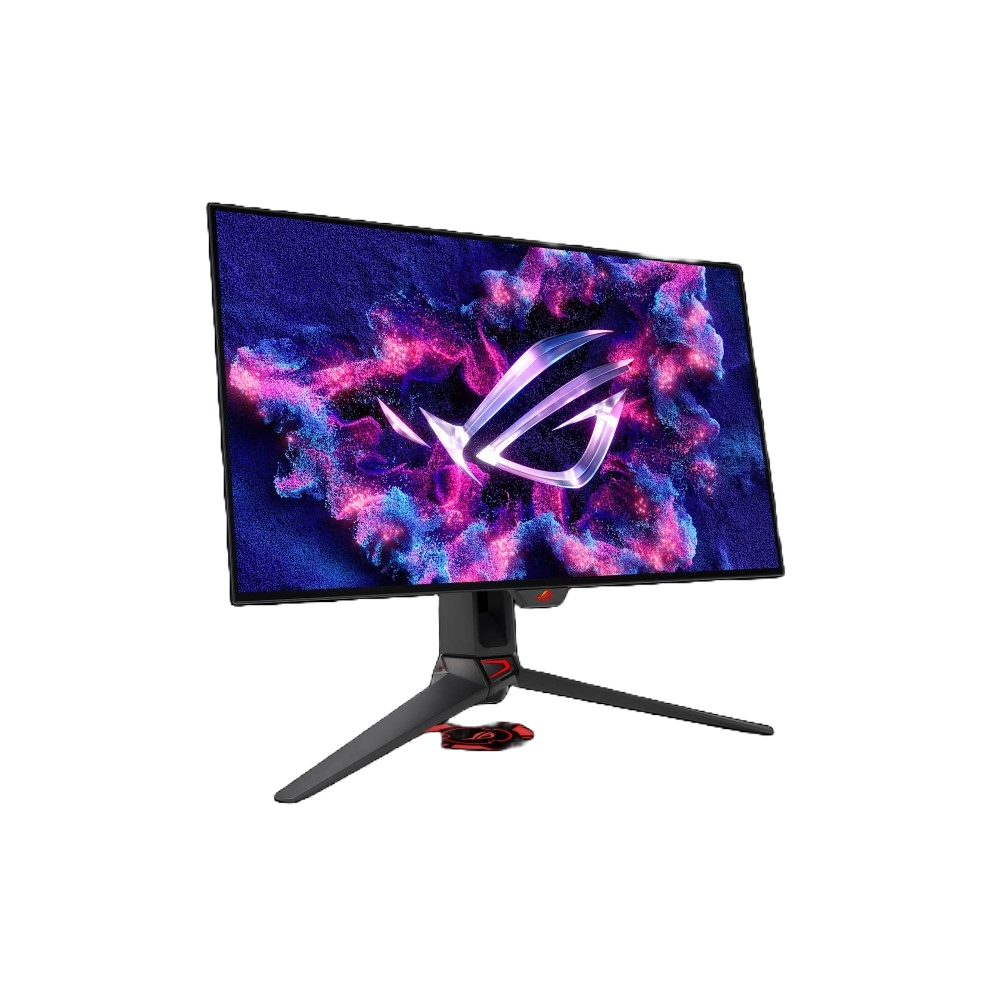

Best 1440p OLED Gaming Monitor
ASUS ROG Swift PG27AQDP
The ASUS ROG Swift PG27AQDP is hands down the best 1440p OLED gaming monitor money can buy. 1440p resolution combined with a 480Hz refresh rate, superb motion clarity, impressive HDR, no text fringing issues, and incredible color accuracy create an unbeatable combo no other 1440p OLED monitor can match.
|
Pros |
Cons |
|---|---|
|
✓ 4K@240Hz and 1080@480Hz modes |
✗ Pricey |
|
✓ USB 3.2 hub and a USB-C port with 90 USB Power Delivery |
✗ The stand is humongous |
|
✓ Brilliant HDR experience |
✗ Doesn’t support hardware color calibration |
|
✓ Wide color gamut with high color accuracy |
|
|
✓ Text fringing not noticeable in 4K@240Hz mode |
LG’s 4K 240Hz WOLED panel can also work at 1080p@480Hz, making the 32-inch OLED monitors that feature said panel a great choice for 4K gamers who like to play esports titles at super high refresh rates. You can enjoy AAA games in 4K, then switch to 1080p@480Hz with a press of a button and play your favorite competitive games with ultimate motion clarity and higher frame rates since you don’t have to run them at 4K. If you’d like to experience 480Hz goodness, get the ASUS ROG Swift OLED PG32UCDP.
The ASUS ROG Swift OLED PG32UCDP is the best choice here since it’s brighter and has better color calibration than its closest competitor, the LG 32GS95UE, which offers 1080p@480Hz and 4K@240Hz modes as well. Compared to LG’s monitor, you’re also getting an anti-flicker feature that almost completely removes the VRR flicker found in so many OLED monitors, with the price to pay being a narrower VRR range.
Thanks to the 4K native resolution, you can use the ASUS PG32UCDP for serious work, including text editing, since 4K has a high enough PPI to almost completely remove text fringing, both in Windows and in your favorite text editor.
Aside from offering an incredible 480Hz gaming experience, the ASUS PG32UCDP offers impressive HDR and immaculate color accuracy, allowing you to use it for photo and video editing. The rear side houses one DisplayPort 1.4, two HDMI 2.1, and a USB-C port with DP Alt mode and 90W USB Power Delivery, which is great to see. There’s also a USB hub with three USB-A 3.2 ports, which is a nice bonus, and a built-in KVM switch.
The main negative is the high price. Other deficiencies include a massive stand that might be too large for some desks and the lack of hardware calibration support. If you don’t care about 4K and are fine with a 480Hz@1440p gaming experience, the ASUS ROG Swift PG27AQDP, which offers a 1440p and 480Hz combo, is the way to go.
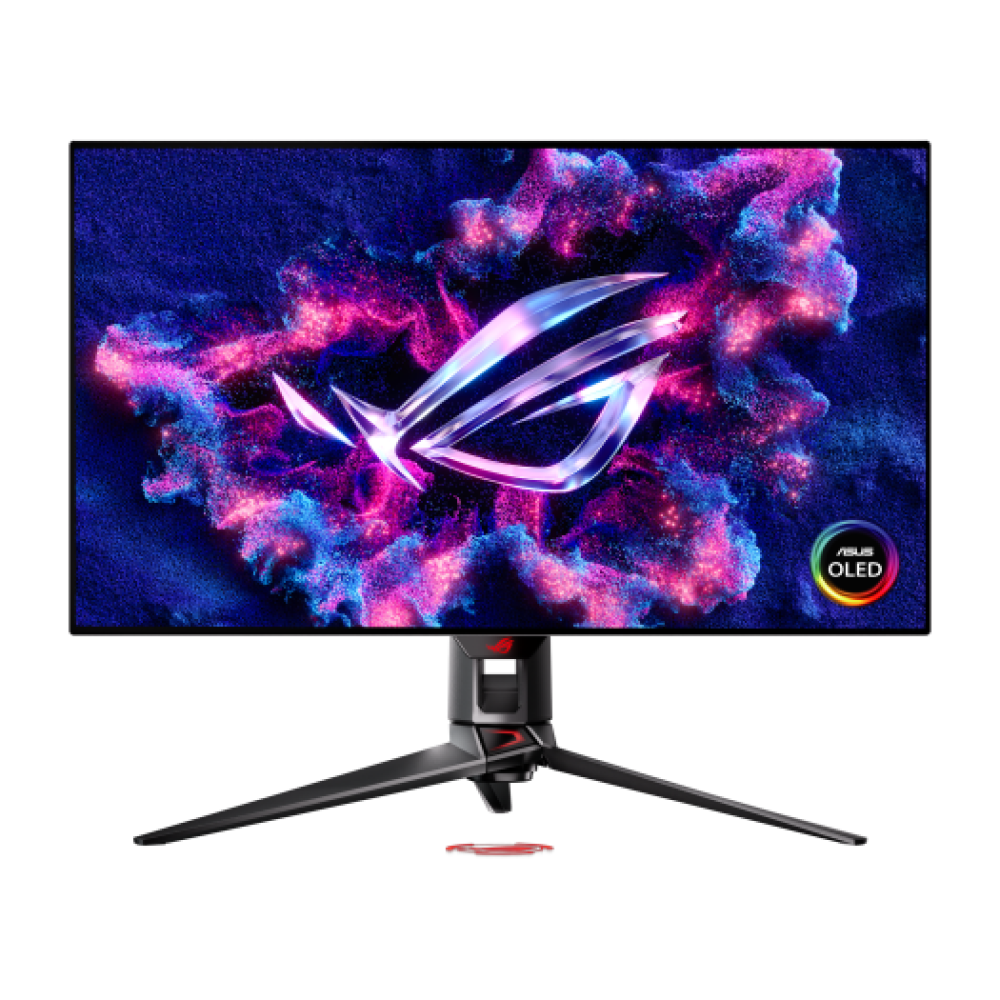

Best 480Hz OLED Gaming Monitor
ASUS ROG Swift OLED PG32UCDP
If you’re after a 4K OLED gaming monitor but want to play esports titles at 480Hz, the ASUS ROG Swift OLED PG32UCDP is where it’s at. This OLED gaming monitor provides the best of both worlds thanks to its dual 4K@240Hz and 1080p@480Hz modes you can switch between with the press of a button.
FAQ
What is OLED?
OLED stands for organic light-emitting diode or organic LED. These “self-emissive” diodes can generate light without the need for a backlight, thus making OLED displays a perfect choice for people who want the best HDR experience possible.
Will an OLED gaming monitor have burn-in issues?
It will have. Although modern OLED panels are less prone to burn-in than previous generations, there’s still a good chance they will develop burn-in over time.
You should be fine if you only plan to game on your OLED monitor. However, if you plan to use it for work that includes lots of static elements for at least six hours a day or longer, consider getting an LCD monitor instead.
Are OLED screens better for gaming?
OLED screens are the best option for gaming thanks to their near instantaneous response time, which results in superb motion clarity. They also offer a top-notch HDR experience, and excellent colors. Overall, they’re much better for gaming than LCD screens.
Should I get a 4K gaming monitor?
This depends on you and your needs. If you’ve got a PC that can run games in 4K without issues, why not? But if your PC is too weak for 4K gaming, or 32-inch and larger screens are too massive for you, you should think about getting a 1440p monitor instead.


